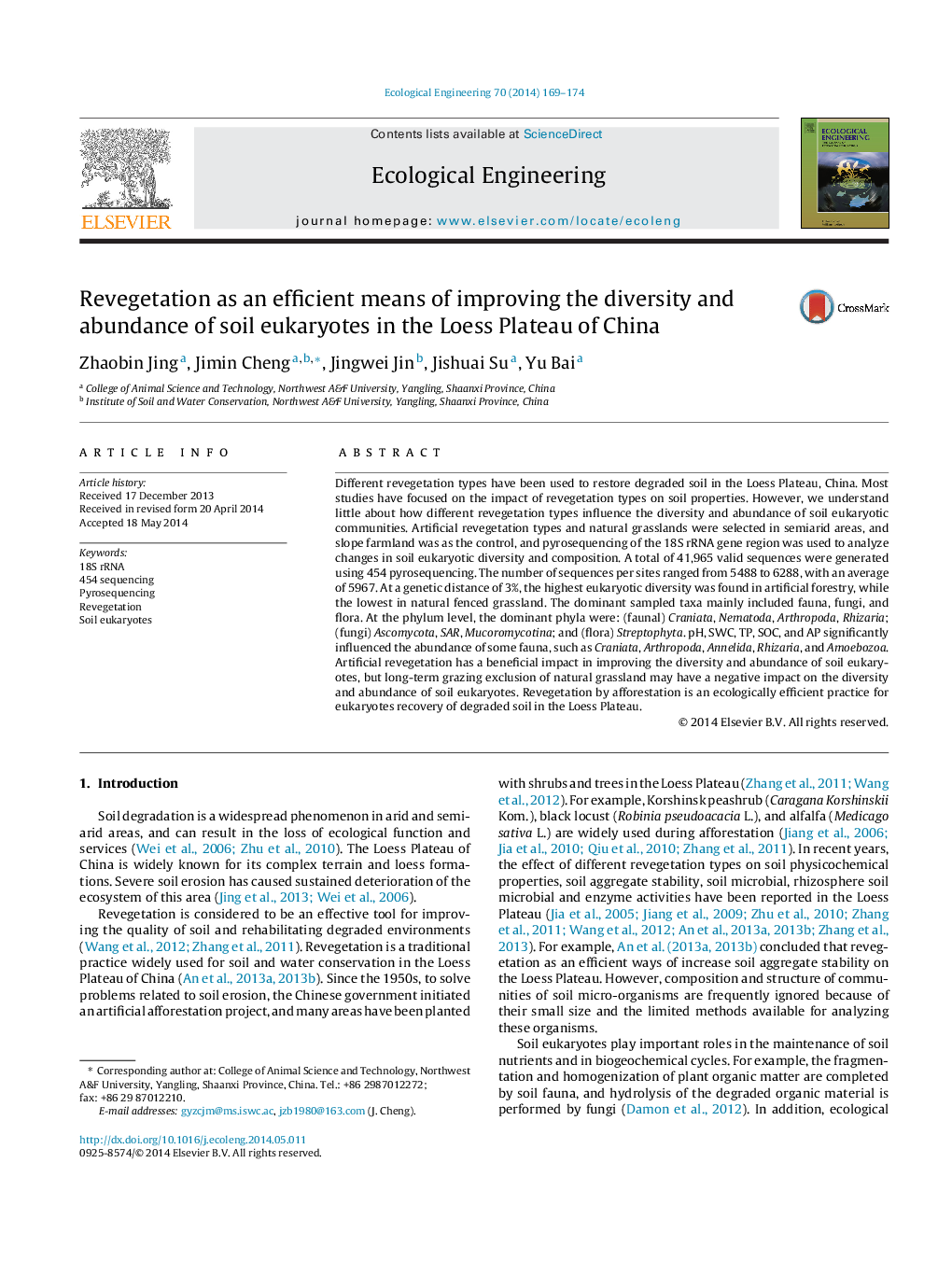| Article ID | Journal | Published Year | Pages | File Type |
|---|---|---|---|---|
| 6302133 | Ecological Engineering | 2014 | 6 Pages |
Abstract
Different revegetation types have been used to restore degraded soil in the Loess Plateau, China. Most studies have focused on the impact of revegetation types on soil properties. However, we understand little about how different revegetation types influence the diversity and abundance of soil eukaryotic communities. Artificial revegetation types and natural grasslands were selected in semiarid areas, and slope farmland was as the control, and pyrosequencing of the 18S rRNA gene region was used to analyze changes in soil eukaryotic diversity and composition. A total of 41,965 valid sequences were generated using 454 pyrosequencing. The number of sequences per sites ranged from 5488 to 6288, with an average of 5967. At a genetic distance of 3%, the highest eukaryotic diversity was found in artificial forestry, while the lowest in natural fenced grassland. The dominant sampled taxa mainly included fauna, fungi, and flora. At the phylum level, the dominant phyla were: (faunal) Craniata, Nematoda, Arthropoda, Rhizaria; (fungi) Ascomycota, SAR, Mucoromycotina; and (flora) Streptophyta. pH, SWC, TP, SOC, and AP significantly influenced the abundance of some fauna, such as Craniata, Arthropoda, Annelida, Rhizaria, and Amoebozoa. Artificial revegetation has a beneficial impact in improving the diversity and abundance of soil eukaryotes, but long-term grazing exclusion of natural grassland may have a negative impact on the diversity and abundance of soil eukaryotes. Revegetation by afforestation is an ecologically efficient practice for eukaryotes recovery of degraded soil in the Loess Plateau.
Related Topics
Life Sciences
Agricultural and Biological Sciences
Ecology, Evolution, Behavior and Systematics
Authors
Zhaobin Jing, Jimin Cheng, Jingwei Jin, Jishuai Su, Yu Bai,
